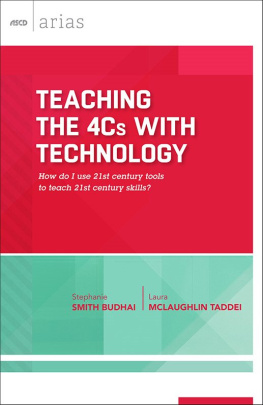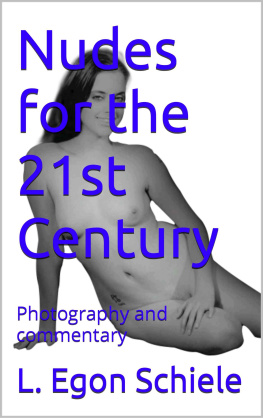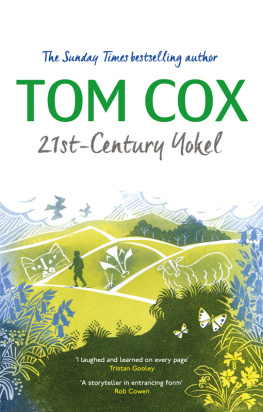Damico Amy M. - 21st-century tv dramas: exploring the new golden age
Here you can read online Damico Amy M. - 21st-century tv dramas: exploring the new golden age full text of the book (entire story) in english for free. Download pdf and epub, get meaning, cover and reviews about this ebook. City: Santa Barbara;California;Denver;Colorado, year: 2016, publisher: ABC-CLIO, LLC;Praeger, genre: Romance novel. Description of the work, (preface) as well as reviews are available. Best literature library LitArk.com created for fans of good reading and offers a wide selection of genres:
Romance novel
Science fiction
Adventure
Detective
Science
History
Home and family
Prose
Art
Politics
Computer
Non-fiction
Religion
Business
Children
Humor
Choose a favorite category and find really read worthwhile books. Enjoy immersion in the world of imagination, feel the emotions of the characters or learn something new for yourself, make an fascinating discovery.

- Book:21st-century tv dramas: exploring the new golden age
- Author:
- Publisher:ABC-CLIO, LLC;Praeger
- Genre:
- Year:2016
- City:Santa Barbara;California;Denver;Colorado
- Rating:3 / 5
- Favourites:Add to favourites
- Your mark:
- 60
- 1
- 2
- 3
- 4
- 5
21st-century tv dramas: exploring the new golden age: summary, description and annotation
We offer to read an annotation, description, summary or preface (depends on what the author of the book "21st-century tv dramas: exploring the new golden age" wrote himself). If you haven't found the necessary information about the book — write in the comments, we will try to find it.
21st-century tv dramas: exploring the new golden age — read online for free the complete book (whole text) full work
Below is the text of the book, divided by pages. System saving the place of the last page read, allows you to conveniently read the book "21st-century tv dramas: exploring the new golden age" online for free, without having to search again every time where you left off. Put a bookmark, and you can go to the page where you finished reading at any time.
Font size:
Interval:
Bookmark:
21ST-CENTURY TV DRAMAS
Exploring the New Golden Age
AMY M. DAMICO AND SARA E. QUAY

Copyright 2016 by Amy M. Damico and Sara E. Quay
All rights reserved. No part of this publication may be reproduced, stored in a retrieval system, or transmitted, in any form or by any means, electronic, mechanical, photocopying, recording, or otherwise, except for the inclusion of brief quotations in a review, without prior permission in writing from the publisher.
Library of Congress Cataloging-in-Publication Data
Damico, Amy M.
21st-century tv dramas : exploring the new golden age / Amy M. Damico and Sara E. Quay.
pages cm
Includes bibliographical references and index.
ISBN 978-1-4408-3344-1 (hardcopy : alk. paper)ISBN 978-1-4408-3345-8 (ebook)
1. Television series21st centuryHistory and criticism. 2. Television programsHistory21st century. I. Quay, Sara E. II. Title. III. Title: Twenty-first century tv dramas.
PN1992.8.S4D36 2016
791.45 ' 6dc23 2015036000
ISBN: 978-1-4408-3344-1
EISBN: 978-1-4408-3345-8
20 19 18 17 16 1 2 3 4 5
This book is also available on the World Wide Web as an eBook.
Visit www.abc-clio.com for details.
Praeger
An Imprint of ABC-CLIO, LLC
ABC-CLIO, LLC
130 Cremona Drive, P.O. Box 1911
Santa Barbara, California 93116-1911
This book is printed on acid-free paper 
Manufactured in the United States of America
Contents
Introduction
What Is a Golden Age?
When applied to popular culture, and specifically television, a golden age refers to a period of years, and sometimes decades, during which the medium is changed in significant ways. The nature of these changes can vary, including the creation of such new storytelling genres as the television drama, the innovation of new technologies like cable networks, and shifts in certain viewing practices as online streaming. The first golden age of television began in 1949 and ended around 1960.
It was not until the 1980s that television entered another period of transformation. In Televisions Second Golden Age: From Hill Street Blues to ER , Robert Thompson argues that a surge in quality televisionwell written, novel television programs with high-quality production valuetook place in the 1980s to early 1990s, marking what he calls televisions second golden age. In other words, the second golden age was defined by the quality of the programs overall, rather than the size of any single programs audience.
At the turn of the 21st century, a new era of television began to be recognized, characterized by the emergence of highly regarded, well-crafted programs offered by a variety of providers ranging from traditional television networks to online streaming services. Some critics refer to this most recent period in television history as a second golden age, perhaps because they are unaware of, or dismiss, Thompsons argument about the 1980s and 1990s. Although HBO may have led the way in new types of television production, other networks followed, resulting in a plethora of award-winning shows from sources as diverse as FX, Sundance, Showtime, ABC, CW, and BBC America.
As occurred during the second golden age, developments in technology have played a part in the current diversity of television offerings. As programming and viewing have shifted to such online platforms as Netflix, Hulu, and Amazon, these businesses, known for distributing content, began to produce their own original series. Such enterprises quickly proved successful. Not only did original programs like House of Cards (2013present) and Transparent (2014present) win awards, they were also well received by fans and critics alike. This broadening definition of who can create television, not to mention how television can be viewed, confirmed that the 21st-century world of TV would never be the same. Matt Smith, a television industry professional, offers his insight in an Adweek blog: This revolution in content production has been largely driven and enabled by a sea change in how consumers access programming. The first wave came as the proliferation of TV channels available via cable/satellite/telco subscriptions. The second wave is the on-demand availability of content through streaming services like Amazon Prime, Hulu Plus and Netflix, powered by over-the-top devices like Roku, Apple TV, Amazon Fire TV and gaming consoles like Xbox. Standalone niche networks that are available 24/7 in a channel format via apps and onlinelike the Tennis Channel and WWE Networkare also part of this wave.
21st-Century TV Dramas examines the landscape of the current golden age from a variety of perspectives, including recurrent themes, connections with contemporary culture, and forms of audience engagement. Although the phrase new golden age may include such genres as situation comedies, miniseries, and documentaries, this book focuses on the wide array of television dramas that have appeared in the first decade or so of the current century. Some of those dramas are highly regarded by critics, have won awards, and engage large and active fan bases. Othersaward winners and nothave smaller, niche audiences who are just as loyal to shows that may get less media attention than their blockbuster counterparts. Some of the dramas discussed in the book break new ground in terms of television content, whereas others add new and nuanced interpretations of familiar themes. Choosing which television shows to write about in depth is always a challenge, and surely, there are programs that merit more attention than this book can provide. In addition, although such shows as The Sopranos , The Wire , and Six Feet Under, as along with ABCs Lost (20042010) and Showtimes Dexter (20062013), form the foundation on which the new golden age rests, these are discussed in less detail here because they have been written about so widely elsewhere.
Why television dramas? Television content is best understood as deeply embedded in its historical moment: Programs, and television dramas particularly, can push against the status quo, explicitly (or implicitly) advocate for social change, frame challenges citizens are facing in new ways, or highlight flaws in institutions that govern viewers lives. And although television audiences have become increasingly fragmented, the cultural medium of television remains a powerful force in U.S. culture, engaging viewers with social issues, registering their hopes and fears, and asking them to consider lifestyles that might be different from their own. 21st-Century TV Dramas makes connections between cultural patterns and trends present during the first 15 years of the 21st century and the content of the television dramas running during this time. We are not alone in this enterprise. Twenty-first-century culture thrives on the practice of readily engaging with, and responding to, popular texts. Indeed, avenues for expression are constantly being developed, allowing more voices to contribute to timely, often sophisticated, discussions of television content. In acknowledgment of this fact, the references cited and sources consulted throughout the book come directly from the popular discourse around the shows discussed, including, among others, the ideas of journalists, cultural critics, bloggers, and fans.
How to Read This Book
21st-Century TV Dramas: Exploring the New Golden Age examines the connection between contemporary culture and a selection of notable 21st-century television dramas. Each chapter title identifies two complementary themes that set the context for the dramas discussed in that chapter. Introductions to each chapter provide an overview of the theme pairings, how the themes connect to contemporary culture, how some examples of dramas engage with those themes, and, when appropriate, how the themes have taken shape during earlier periods in television history. Specific 21st-century dramas related to those themes are then explored in depth. Although readers may choose to read this book from start to finish, the books structure does not make this mandatory. The chapter introductions provide context, however the in-depth examinations of specific dramas and themes stand alone as individual components and can be read in any order.
Next pageFont size:
Interval:
Bookmark:
Similar books «21st-century tv dramas: exploring the new golden age»
Look at similar books to 21st-century tv dramas: exploring the new golden age. We have selected literature similar in name and meaning in the hope of providing readers with more options to find new, interesting, not yet read works.
Discussion, reviews of the book 21st-century tv dramas: exploring the new golden age and just readers' own opinions. Leave your comments, write what you think about the work, its meaning or the main characters. Specify what exactly you liked and what you didn't like, and why you think so.







